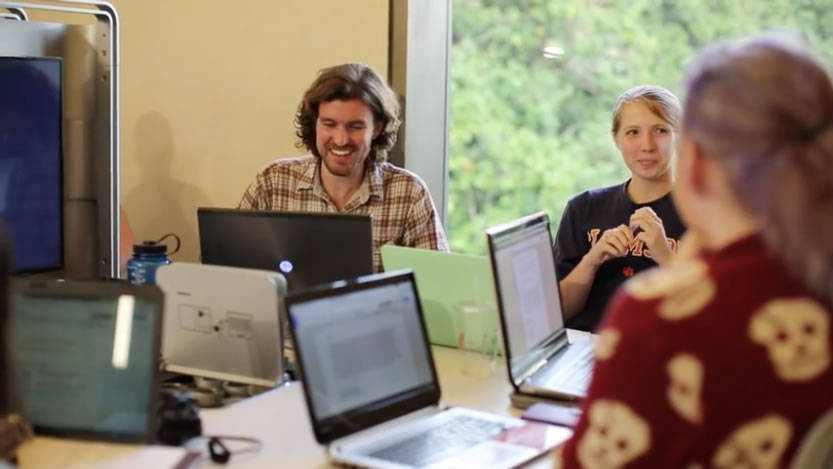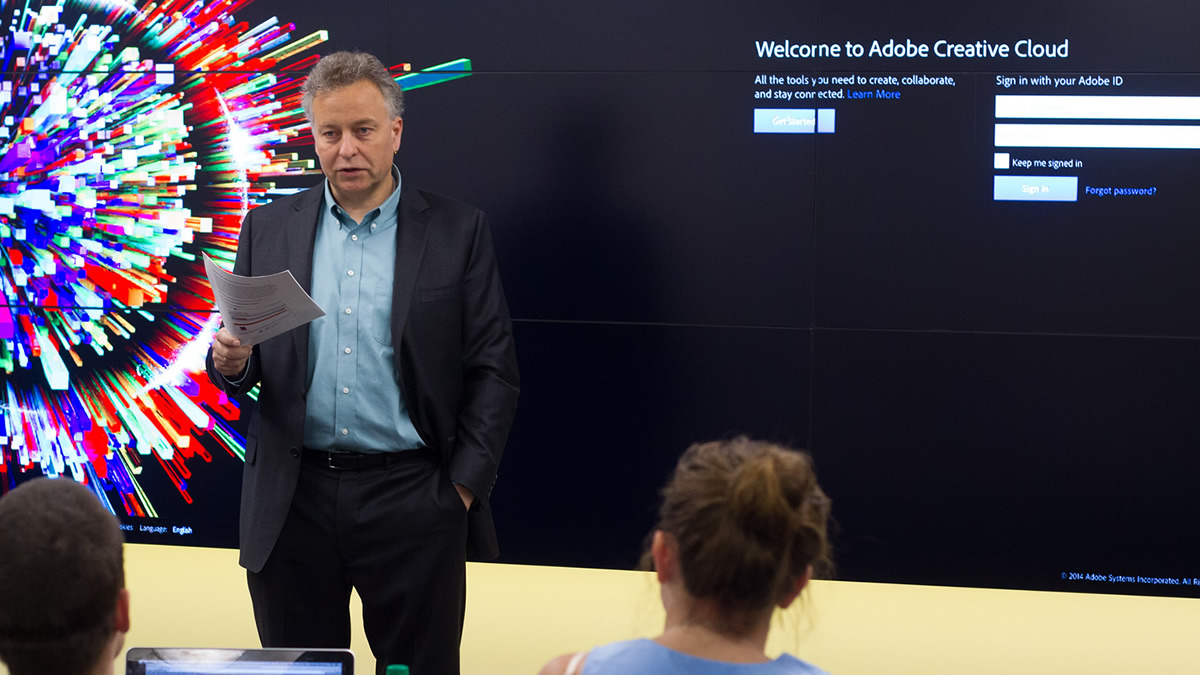CLEMSON — The opening of a new digital studio in Clemson University’s R.M. Cooper Library moves the school forward as a flagship institution for developing new applications for digital publishing and content creation.
“The opening of the Adobe Digital Studio, truly a ‘maker space’ for digital creativity, is a landmark event for Clemson,” said Jim Bottum, vice provost and chief information officer at Clemson. “The studio will be transformational, and I am proud of the effort between our team at Clemson and Adobe that made this possible.”
Students can upload their work and display it on the Behance wall, one of only three in the country.
Students can upload their work and display it on the Behance wall, one of only three in the country.
Last spring, Clemson became the only university in the country to allow all students, faculty and staff full use of the Adobe Creative Cloud. The new studio gives the Clemson community a place to work together, using technology powered by the entire Adobe Creative Cloud and Digital Publishing Solution, the industry-leading solution for creating engaging mobile apps.
Jan Holmevik, associate professor of English and co-director of the Center of Excellence in Next Generation Computing and Creativity, sees it as another step forward for 21st century education.
“The big differentiator is creativity, and the studio fits into that larger vision of injecting creativity into the learning process at all levels,” he said. “I hope great ideas will emerge out of the collaborative efforts and sheer inspiration, because seeing what is possible can spark invention.”
The studio features a soundproof audio production studio, a video production studio, collaborative workstations, a high-resolution scanner and a nine-display Behance wall that serves as a focal point for inspiration.
The Behance wall — one of only three in the country and the only one outside of Adobe headquarters — streams projects from Adobe’s Behance eportfolio site based on the current search criterion.
The Adobe Digital Studio in R.M. Cooper Library gives students and faculty a place to collaborate on creative projects.
The system finds all the examples and distributes them across the displays. Clemson students also can upload their work to Behance so it will be displayed on the wall, something Holmevik said is appropriate for its library location.
“Seeing your colleagues’ work portrayed in an artistic display is not only satisfying, but it helps spark creativity and make you want to do better,” he said.
With a focus on working together, Holmevik likes to call the studio “a collaboratory.”
Users have the opportunity to create works that will pay off in the long run.
Wesley Smith, manager of the studio, said, “In today’s job market, it’s not ‘what you know’ as much as ‘what you can do.’ We want to give people the skillset and knowledge to allow them to set themselves apart in the job market and flourish in their careers.”
END



